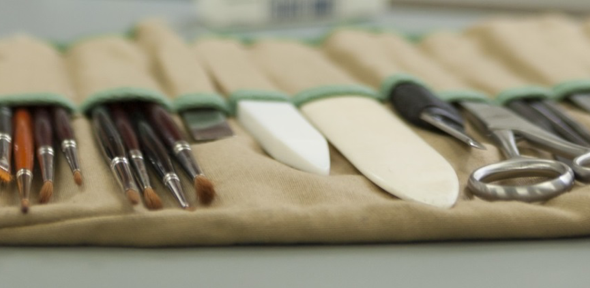
The Conservation Department plays a vital role in safeguarding the Library’s collections, ensuring their continued care, preservation and accessibility for future generations.
Our dedicated team aims to achieve a balance between the long-term preservation of the collections for future generations, and the provision of access for research, study, and display. It is guided by professional standards from the Institute of Conservation and Comité Européen de Normalisation/ European Committee for Standardisation (CEN).
The Department undertakes all aspects of both preventive and remedial conservation. This includes environmental monitoring and rehousing (preventive conservation), as well as treatments for ink corrosion, media consolidation, and the structural repair of historic bookbindings (remedial conservation). Our team specialises in the conservation of rare book, manuscript, and library materials.
Members of the team take an active role in research, contributing to initiatives with the University Library Research Institute, and through meaningful collaborations with peer-groups and professional bodies locally, nationally, and internationally. Our work is guided by the principals of minimal intervention, reversibility, and integrity of the object. We document our work fully and use contemporary research to ensure we chose the most appropriate and sympathetic materials.
For more information on projects in the Conservation Department you can follow us via the University Library’s social media accounts. There are also in-depth articles on our work available on the Special Collections blog.
